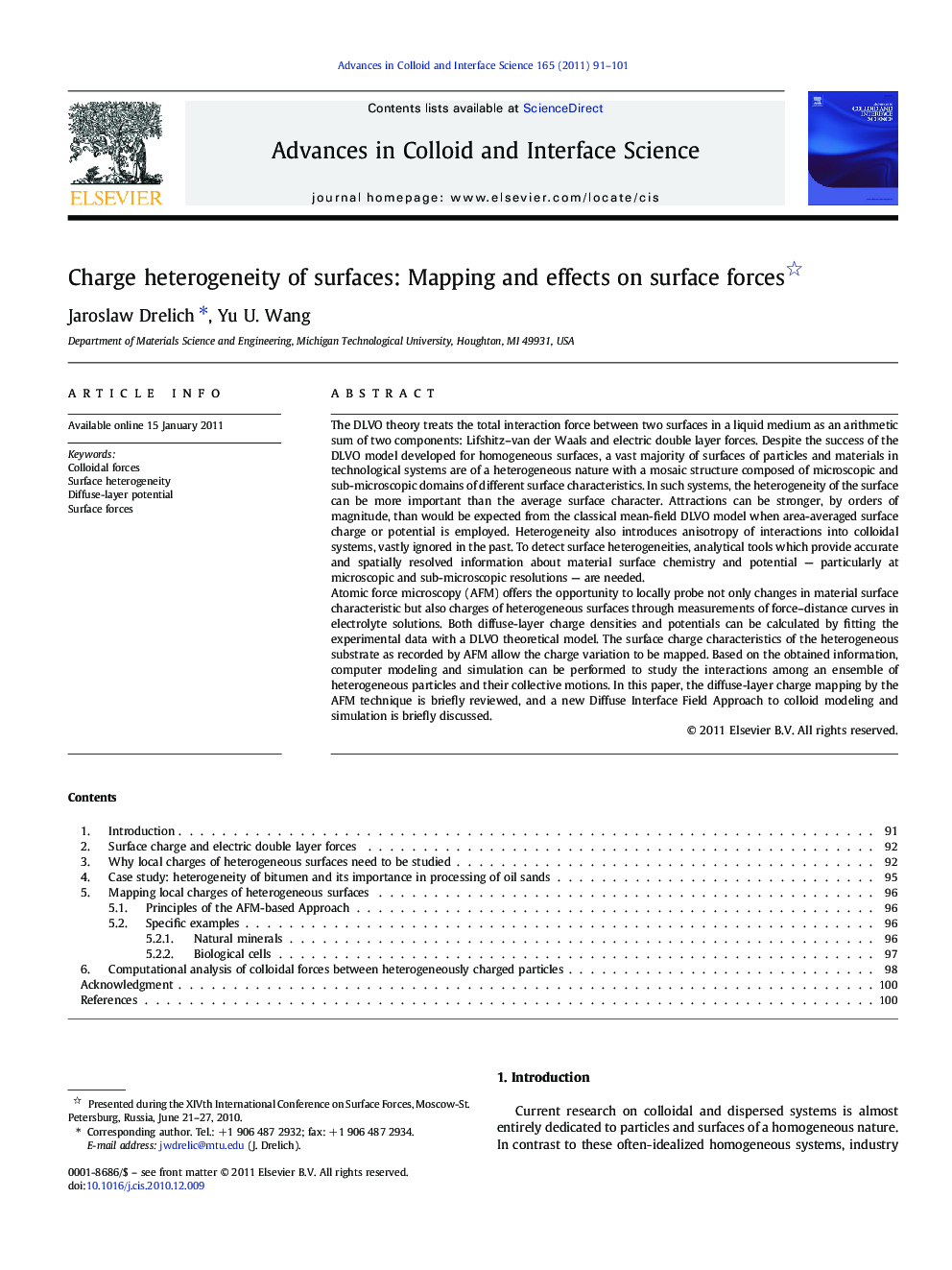| کد مقاله | کد نشریه | سال انتشار | مقاله انگلیسی | نسخه تمام متن |
|---|---|---|---|---|
| 590924 | 878930 | 2011 | 11 صفحه PDF | دانلود رایگان |

The DLVO theory treats the total interaction force between two surfaces in a liquid medium as an arithmetic sum of two components: Lifshitz–van der Waals and electric double layer forces. Despite the success of the DLVO model developed for homogeneous surfaces, a vast majority of surfaces of particles and materials in technological systems are of a heterogeneous nature with a mosaic structure composed of microscopic and sub-microscopic domains of different surface characteristics. In such systems, the heterogeneity of the surface can be more important than the average surface character. Attractions can be stronger, by orders of magnitude, than would be expected from the classical mean-field DLVO model when area-averaged surface charge or potential is employed. Heterogeneity also introduces anisotropy of interactions into colloidal systems, vastly ignored in the past. To detect surface heterogeneities, analytical tools which provide accurate and spatially resolved information about material surface chemistry and potential — particularly at microscopic and sub-microscopic resolutions — are needed.Atomic force microscopy (AFM) offers the opportunity to locally probe not only changes in material surface characteristic but also charges of heterogeneous surfaces through measurements of force–distance curves in electrolyte solutions. Both diffuse-layer charge densities and potentials can be calculated by fitting the experimental data with a DLVO theoretical model. The surface charge characteristics of the heterogeneous substrate as recorded by AFM allow the charge variation to be mapped. Based on the obtained information, computer modeling and simulation can be performed to study the interactions among an ensemble of heterogeneous particles and their collective motions. In this paper, the diffuse-layer charge mapping by the AFM technique is briefly reviewed, and a new Diffuse Interface Field Approach to colloid modeling and simulation is briefly discussed.
Graphical AbstractFigure optionsDownload as PowerPoint slideResearch Highlights
► Local surface charge and interaction are important in stability of colloidal systems.
► AFM can measure and map the diffuse-layer charges on heterogeneous surfaces.
► We attempt to link the AFM charge mapping with modeling of surface forces.
Journal: Advances in Colloid and Interface Science - Volume 165, Issue 2, 11 July 2011, Pages 91–101